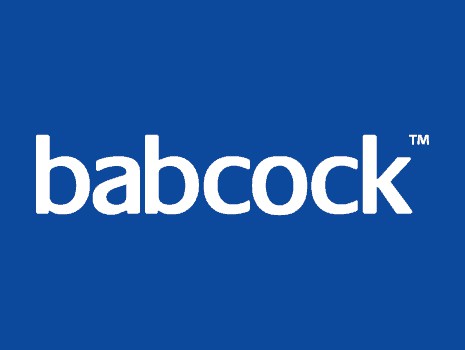Following a fulfilling 27 years of service with the Royal Navy, Richard Bowie, Project Manager for Auxiliary and Electrical Systems, joined Babcock in 2018.
Inspired by engineering at an early age, Richard quickly dove into a career that surrounded submarines. Inspired by their lethality, robustness, and ability to support nations and their sailors, he has found it a privilege to have a hands-on experience with submarine life cycles throughout his career.
We sat down with Richard to learn more about how his experience and expertise not only led him to his role at Babcock but is also supporting his team as they work towards delivering HMCS Victoria’s Extended Docking Work Period.
What path led you to Babcock Canada?

From an early day, I was interested in working within an engineering or science-based industry, and where I was raised, Sub Sea Oil and Gas was the dominant industry. With a choice to make, and a desire (which has continued through my life) to travel, I joined the armed forces.
I joined the Royal Navy from school, where I completed an electronic and electrical engineering apprenticeship to become an Engineer Technician. I specialized in the maintenance and repair of submarine sonar and combat systems in attack submarines, a nuclear-powered submarine which typically has sub-surface (torpedoes) and above surface (land strike) capabilities and can be used to achieve a multitude of effects.
From there, I gained a commission. I read Electro-Mechanical Engineering at Southampton University and followed the arc of a Weapon Engineering Officer.
When not at sea on submarines, I have enjoyed several interesting and challenging roles that have varied from planning the First of Class Sea trials for HMS ASTUTE, to coordinating engineering support for deployed operational platforms in foreign berths, to supporting the generation process of deployable operational submarines.
What does it mean to be Project Manager for Auxiliary and Electrical Systems?
My role is to support the delivery of our customer’s requirement, with the resources at our disposal in the planned and agreed upon timeframe. The age and complexity of the Victoria Class submarines means that what is planned for rarely remains constant. I aim to balance changing and conflicting demands with all interested stakeholders to maintain a goal that is deliverable. What was planned yesterday, can quickly be replaced with something unexpected tomorrow.
My day-to-day generally sees me working with our three operational delivery cells (auxiliary, electrical, and structures), supporting functions (Engineering/ Supply Chain/ Sustainment), customer, and contractors to remove the obstacles that potentially place risk on delivering the submarine within the agreed timeline. I am also very involved in interfacing with inputs from all Team Victoria-Class partners: Babcock Canada, Seaspan Victoria Shipyards, and BMT, as monitoring and reporting our progress is essential. To achieve our goal, we must be aware of, and report on, our progress. We use this reporting to make improvements and leverage our strengths where possible to maximize our potential.
I hope the value I add to the role is my experience and subject matter knowledge, both internally and externally, to position our team as best I can to successfully deliver the current Extended Docking Work Period (EDWP) of HMCS Victoria.

What challenges have you faced working on the submarine program, and how have you and your team overcome it?

An EDWP is an intensive and complex multi-year work period where the submarine undergoes extensive surveys, repairs, and major capability upgrades. This period of the submarine lifecycle is to ensure it remains safe, functional, and operationally capable for its return to the Royal Canadian Navy.
The nature of HMCS Victoria’s EDWP is more demanding than those we have accepted in the past. With shifting expectations, our challenge is to ensure we are capable of, and set up to deliver, the expected scope of work in the available time.
Utilizing gained experience from HMCS Corner Brook, early success and improvement has been evident. As we progress deeper into the EDWP, the complexity will increase and we must deliver further improvement and efficiencies to support its successful delivery.
Identifying and understanding our constraints against the demand and crafting suitable solutions is the challenge we much face together.
What inspires you in your work?
When I think back to seeing submarines move on the surface towards Faslane and Holy Loch, the aura and mystique they project was very attractive and inspiring.
I am mindful that not many people get to be involved in a submarine’s life cycle, and even less so, get to operate on them. I consider myself lucky to have done both, but also lucky that I get to remain involved by supporting the maintenance and enhancement of the Victoria Class.
In my mind, it doesn’t matter where or who in the world working on submarines may affect. The complexity of these machines and systems, the challenging environment in which they operate, the safety considerations and standards that govern the work, the military ‘effect’, both in the flexibility and lethality they offer speak for themselves.
Most importantly, the Royal Canadian Navy personnel that sail them and their reliance on the robustness and reliability is compelling for me. In some very small part, working on these submarines mean I am not only working to keep our sailors safe, but I am contributing towards the ongoing security of this Nation.
Are there any milestones for you on the horizon?

For our team and HMCS Victoria’s EDWP, the next major milestone is completing the small remaining removals and surveys of the systems. Completing this milestone will allow us to understand the work that is needed to restore these submarines to an operable state and informs the scale of the task. Right now, with most systems and spaces stripped, there is a unique view of the submarine available that is rarely seen.
Personally, my most recent milestone was reaching my 5-year anniversary with Babcock in February of 2023!
What is something about yourself that your colleagues may not know?
In the last few months of my ‘at sea’ work in the navy, my submarine was tasked to search the Indian Ocean for a debris field or indicative signs from Flight MH370, a flight that disappeared without trace.



